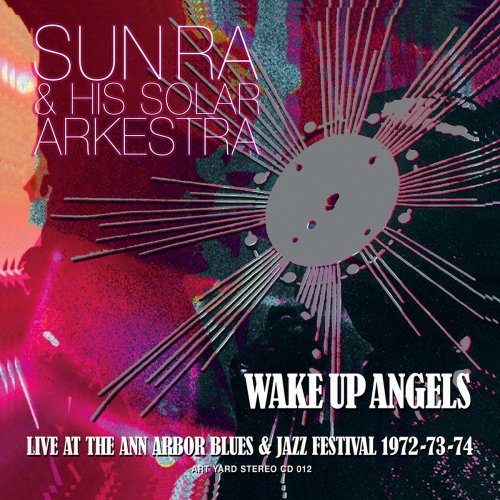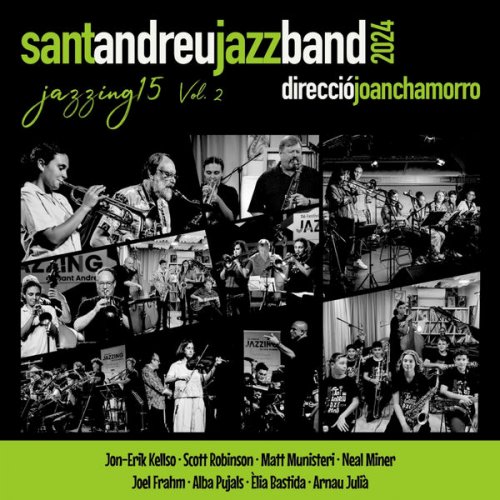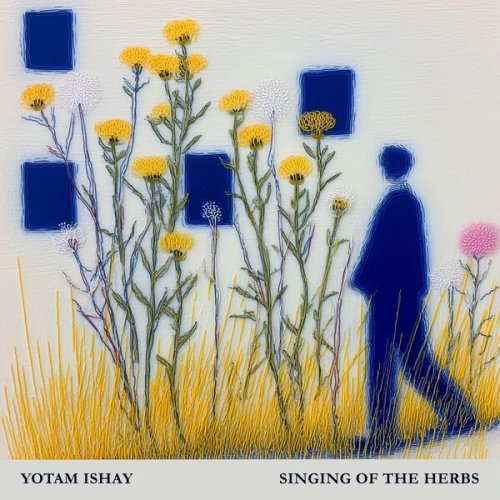Sun Ra & His Solar Arkestra - Wake Up Angels (2011, Reissue 2017)

Artist: Sun Ra & His Solar Arkestra
Title: Wake Up Angels
Year Of Release: 2017
Label: Rer Megacorp
Genre: Jazz
Quality: FLAC (tracks)
Total Time: 142:10 min
Total Size: 907 MB
WebSite: Album Preview
Tracklist:Title: Wake Up Angels
Year Of Release: 2017
Label: Rer Megacorp
Genre: Jazz
Quality: FLAC (tracks)
Total Time: 142:10 min
Total Size: 907 MB
WebSite: Album Preview
01. Enlightenment 02:11
02. Space Is the Place 08:11
03. Improvisation 05:44
04. Discipline 27-11 01:42
05. What Planet Is This 01:20
06. Life Is Splendid 01:50
07. Immeasurable 02:44
08. Outer Spaceways Incorporated 01:55
09. Improvisations 13:49
10. Disipline 99 04:57
11. Love in Outer Space 06:17
12. Watusi 06:52
13. Discipline 27-11 02:13
14. At First There Was Nothing 03:54
15. The Universe Has More to Offer You 01:18
16. Wake up Angels 02:53
17. The Universe Sent Me to Converse with You 04:51
18. Outer Space Employment Agency 05:01
19. Untitled Improvisation 13:15
20. Discipline 27 09:18
21. Love in Outer Space 04:40
22. The Shadow World 06:04
23. Space Is the Place 07:17
24. Second Stop Jupiter 01:40
25. Discipline 27-11 02:31
26. Images 08:22
27. Is It Forbidden 02:29
28. Watusi 05:50
29. Sun Ra and His Band from Outer Space 02:46
Sun Ra & His Arkestra enjoyed more than 40 years of glorious musical fruition, and for every minute of Its elongated existence-from Its formation as the Herman Blount Octet In the early 1950s until the leader’s earthly demise In the early ‘90s-the Arkestra blazed a trail across the musical firmament unlike anything that’s ever been heard. Organized by the pianist as a means of realizing his Idiosyncratic compositions and nurtured In Chicago In the second half of the ’50s, the Arkestra developed around a solid core formed by key members bassist Ronnie Boykins and saxophonists John Gilmore. Marshall Allen, and Pat Patrick. After five or six very productive years in the Windy City, during which the Arkestra’s ever more innovative music was carefully documented In performance by Sun Ra and his visionary business partner, Alton Abraham, Ra and the band resettled In New York City In the winter of 1960-61 and soon began to playa leading role In the burgeoning Jazz avant-garde, Sun Ra’s startling orchestral music and otherworldly space philosophy were Introduced to the Jazz world by a pair of obscure albums for Transition (1958) and Savoy Records (1960) which were Issued almost without notice. Ra met a slightly wider audience with the appearance of three mld-’60s LPs for ESP-Disk. Including the magnificent Heliocentric Worlds of Sun Ra. At the same time Ra and Alton Abraham set Into moron their own record label, EL Saturn, and began to issue a steady stream of Sun Ra releases drawn from the Arkestra’s archives which revealed the origins of the composer’s musical genius and traced its Incredible growth and ever-broadening scope from the off-center bebop “little big band” charts of the early- and mld-’50s through his earliest space-Jazz arrangements and their flowering Into full-fledged explorations of previously unmapped musical horizons. Abraham and Ra had been documenting the composer’s music in performance by the Arkestra almost since Its Inception, and the hard-to-get. bizarrely-packaged Saturn albums with titles like Super-Sonic Jazz, We Travel the Spaceways, Interstellar low Ways, and Angels & Demons At Play soon began to attract the attention of adventurous listeners all over the world. By the early 1970s Sun Ra & the Arkestra-now working under a variety of titles utilized by Ra to help define the specific function he had in mind for each musical permutation were Introduced to enthusiastic European audiences, although the U.S. Jazz establishment seemed forever to regard Ra & the Arkestra-under whatever guise-as some sort of freakish oddity unworthy of serious consideration. During their decade In New York City-which ended when the Arkestra moved en masse to Philadelphia around 1972- Chicago veterans John Gilmore, Marshall Allen, and Pat Patrick were joined by a wild assortment of adventurous players and a vocal ensemble, the Space Ethnic Voices, led by the Incredible June Tyson. Seasoned by dally rehearsals and regular performances at places like Slug’s Saloon on the lower east side, the Arkestra was now fully skilled at bringing the composer’s revolutionary musical concepts to vivid life before the public.

![Mark Northam - More Music From The Pixar Films For Solo Piano (2025) [Hi-Res] Mark Northam - More Music From The Pixar Films For Solo Piano (2025) [Hi-Res]](https://img.israbox.com/img/2025-12/17/qc8ci6ocl25zt4m9ojnjn3k2k.jpg)



![Yasuhiro Usui, Ryoko Ono and Taro Tatsumaki - The House Concert Live Collection, Vol. 55: Yasuhiro Usui (Live at 3rd Floor, Artist House, Daehak-ro, Seoul, 7/12/2015) (2025) [Hi-Res] Yasuhiro Usui, Ryoko Ono and Taro Tatsumaki - The House Concert Live Collection, Vol. 55: Yasuhiro Usui (Live at 3rd Floor, Artist House, Daehak-ro, Seoul, 7/12/2015) (2025) [Hi-Res]](https://www.dibpic.com/uploads/posts/2025-12/1765791289_rchn1y2nh7yfb_600.jpg)
![Sibel Köse Septet - In Good Company (2025) [Hi-Res] Sibel Köse Septet - In Good Company (2025) [Hi-Res]](https://www.dibpic.com/uploads/posts/2025-12/1765846644_uizwujac4ht2d_600.jpg)

